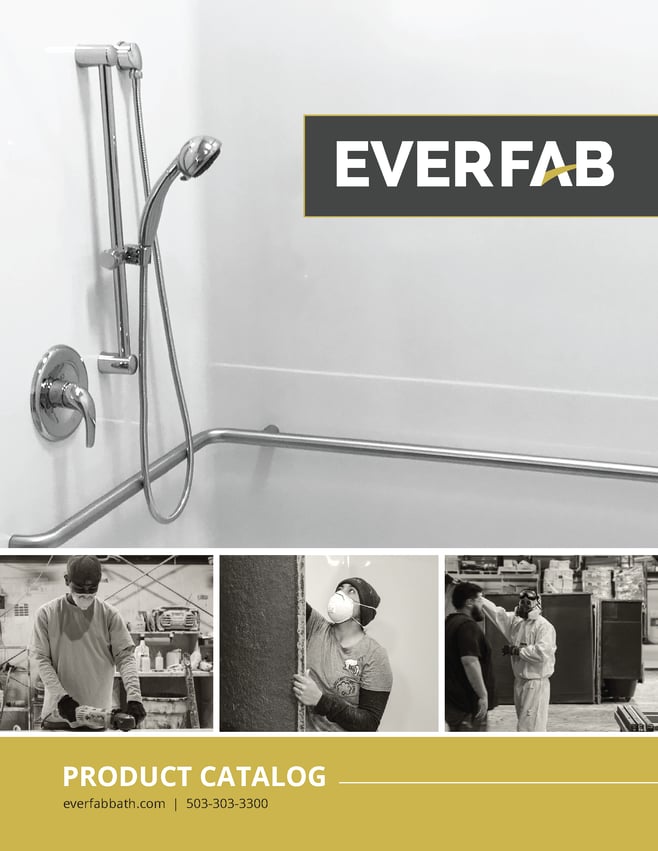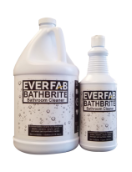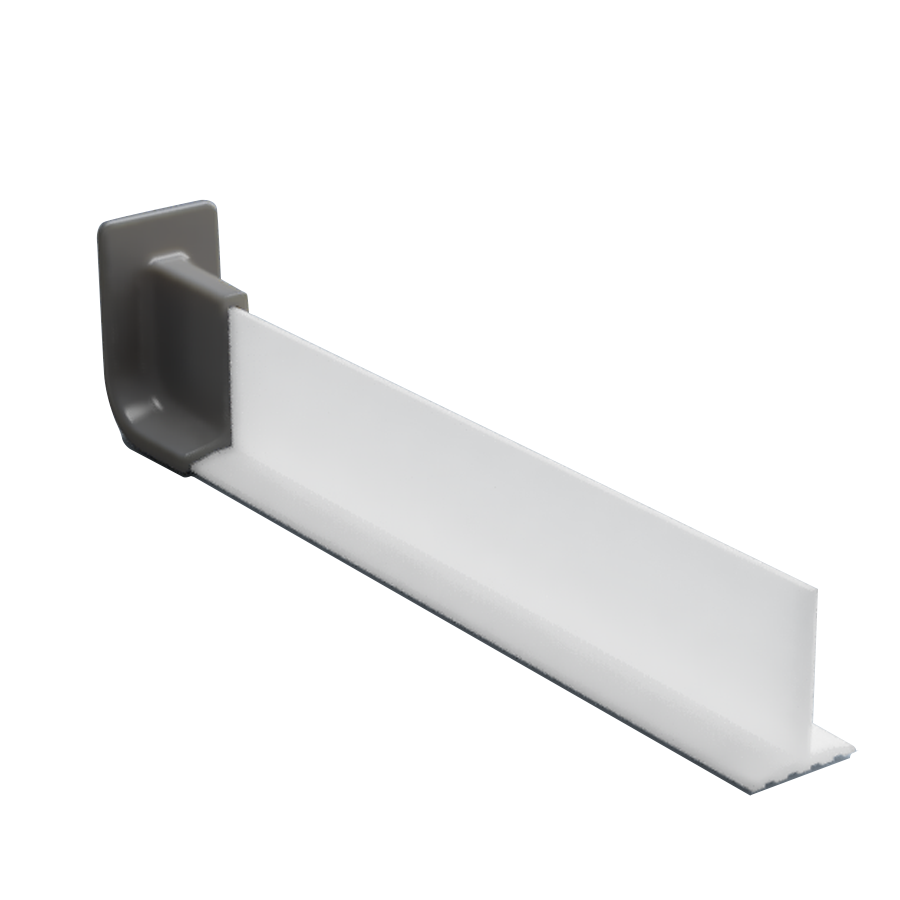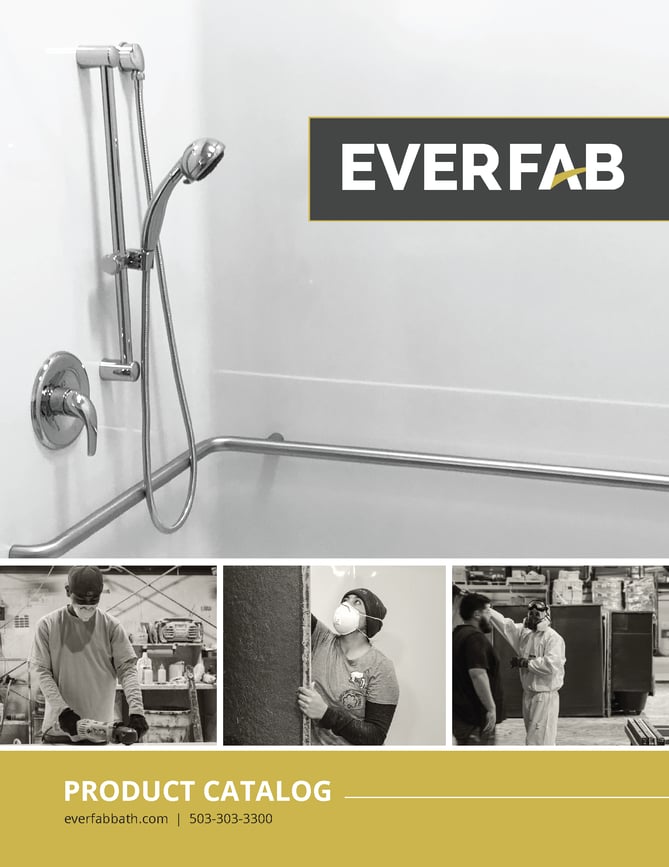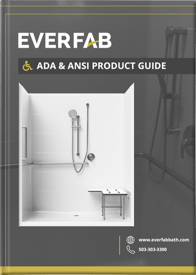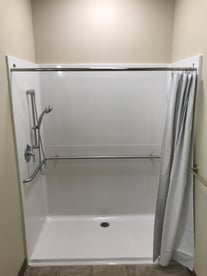-
Shop All Products
-
-
Shop All Products
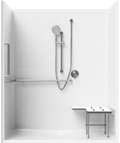
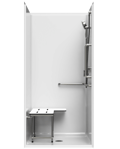
We meticulously sculpt and construct each model by hand to ensure our customers have durable shower units they can comfortably rely on for years to come.
-
-
-
About
-
-
About
We strive to be world-class in everything we do by hiring the best people, building the best product, and providing the best customer experience.
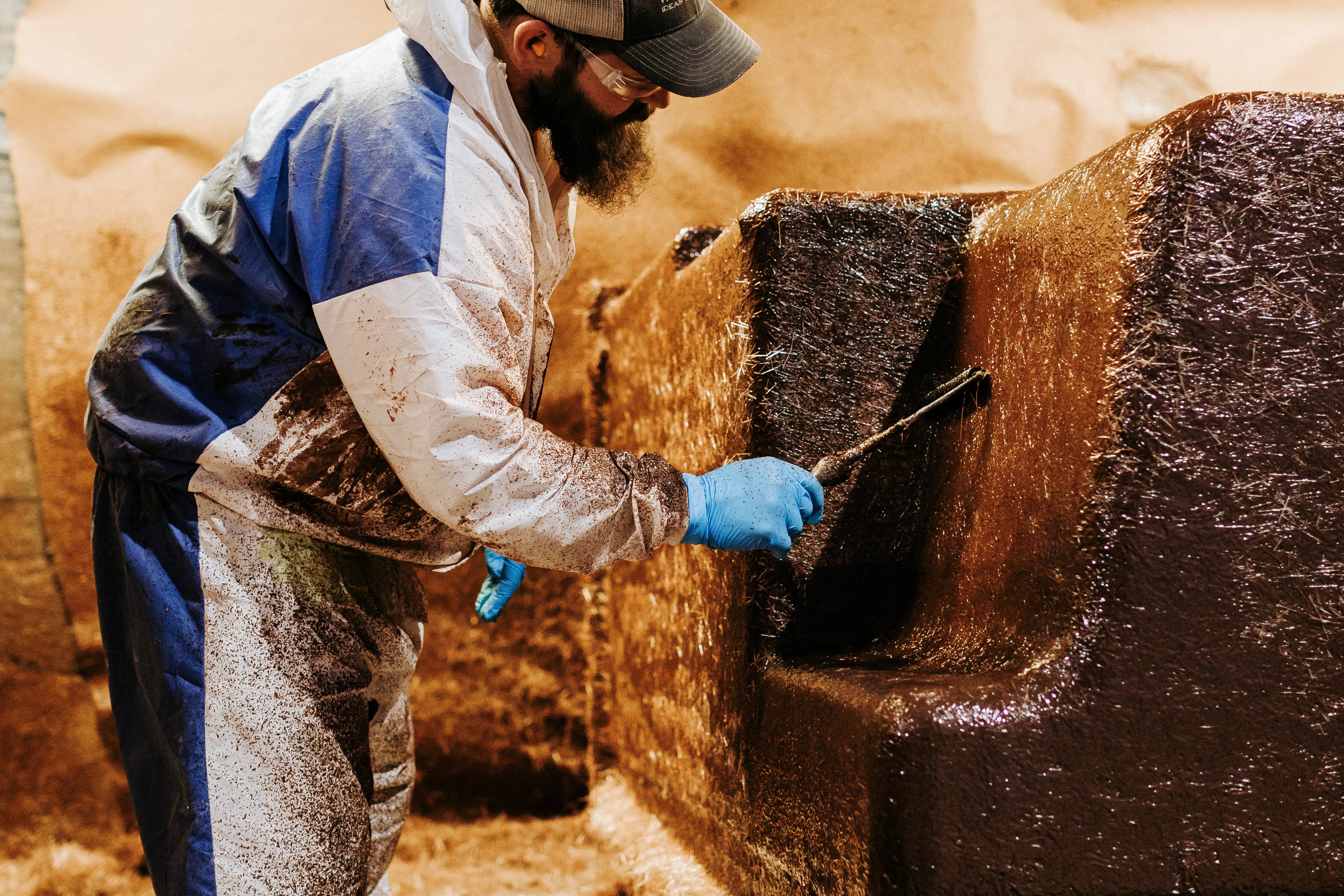
-
-
- Who We Work With
-
Resources
- Projects
- 503-303-3300
- Contact Us
- Search Products
Blog
Discover the latest industry trends and insights related to bathroom architecture and ADA compliance.
The Features That Define a High-Quality ADA Transfer Shower

Bathroom architects have to abide by a specific set of requirements when setting up an accessible bathroom layout. There isn’t a one-size-fits-all approach to ADA accessible bathroom and shower designs, though. For example, an ADA transfer shower is smaller, required less clearance, and is used differently than an ADA roll-in shower.
To help you better adhere to the standards of whatever project you’re working on, we’ve outlined the predominant features found in the highest-quality ADA transfer shower units.
ADA Compliant Grab Bars and Shower Seat
ADA transfer showers must include a shower seat and grab bar(s) to be considered compliant. The requirements for ADA compliant grab bars and shower seats are as follows:
- Grab bars have to be capable of supporting up to 250 pounds of stress.
- Grab bars must have 1.5” of space from the shower wall.
- ADA shower seats must be able to withstand 250 pounds of force.
While these shower units should have the grab bars and seat pre-installed, it’s important to note that they also have the built-in reinforcement needed to support those accessories. If a grab bar is just screwed into a non-reinforced shower wall, for example, the odds of it being able to withstand the required weight are next-to-none.
Compliance with the Dimensions Outlined by the ADA
An ADA transfer shower is designed to support standing users who can transfer themselves from a walker or wheelchair into the shower. To provide those users with the safest and most comfortable experience, each unit must abide by a specific set of dimensional requirements. The official ADA transfer shower dimensions look like this:
- Interior dimensions of at least 36” x 36”.
- Clearance of 36” in width and 48” in length as measured from the control wall.
- A curb that goes no higher than ½”.
- The controls should be installed on the shower wall opposite the seat, above the grab bar but lower than 48” above the finished floor.
Reliable Durability and Construction
In addition to the required standards that an ADA transfer shower must meet, architects would do well to find a trustworthy manufacturer to work with. Even a shower unit that technically meets all of the ADA transfer shower requirements may not be the right model for your project.
Suppose the model relies on rigid materials in its construction. These could lead to a shower prone to cracking and other damages during transportation and installation that could compromise the unit’s integrity. Or maybe the manufacturer uses wood or cardboard, two materials that can also lead to a lesser-quality product that—while ADA compliant—is far more likely to fail over time.
Transfer showers need to last a long time, and nothing less than the highest-quality construction will do. Make sure you take some time to talk with a shower manufacturer before purchasing their units, as this will help you discern whether the units they offer are capable of delivering the quality your project demands.
Get the latest!
Subscribe to our newsletter
Read On
3 Benefits of a Commercial Shower Unit That Uses EverFab Core Material
Our unique EverFab Core Material is at the heart of every commercial shower design from EverFab....How Can You Tell Which Shower Materials Are the Best?
Stone or tile showers can be beautiful, but also tend to be heavy, expensive, time-consuming to...Shower Bottom Weak Points (And How to Prevent Them)
The shower bottom plate is the most common point of failure in a prefabricated shower unit — but...9050 Porter Way SE, Aumsville, OR 97325
COPYRIGHT © 2025 EVERFAB
